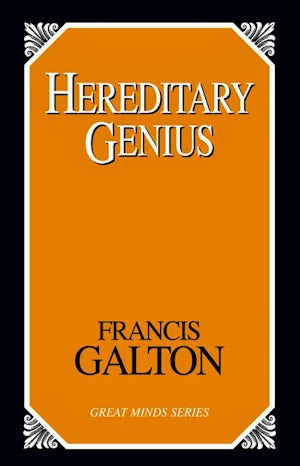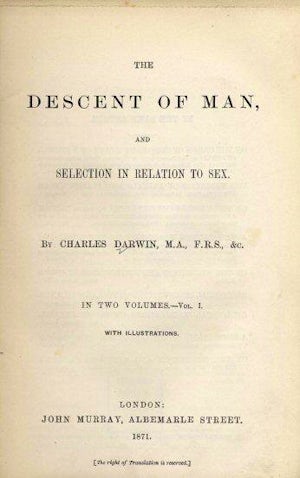1912. American psychologist Henry Herbert Goddard published the book The Kallikak Family: A Study in the Heredity of Feeble-Mindedness in 1912. This book was highly influential in the eugenics movement, and used provocative photographs to further its theses.
The Kallikak Family is an example of family study. Undertaken by a number of eugenicists, family studies sought to track specific traits over two or more (ideally three) generations in order to establish hereditary relationships. Believed to provide “scientific” evidence for the hereditability of feeblemindedness and human intelligence more generally, family studies were used by eugenicists to make a case for eugenic interventions such as immigration restriction, segregation, and sterilization.
Goddard served as Director of the Research Laboratory of the Training School at Vineland, New Jersey, for Feeble-minded Girls and Boys. The research laboratory was opened in 1906 to study feeble-mindedness. Initially this involved studying the “mental condition” of children residing in the Institution in an effort to determine “different grades and types,” and
“to getting an accurate record of what deficiencies each child had and what he was capable of doing, with the hope that in time these records could be correlated with the condition of the nervous system of the child, if he should die while in the Institution and an autopsy should be allowed” (Goddard, 1912, preface).
Eventually it was decided that visits to the children’s home by trained workers were required. Goddard notes in his preface to The Kallikak Family that “[i]t was a great surprise to us to discover so much mental defect in the families of so many of these children” (Goddard 1912, preface). The Kallikak Family was written from the information gathered through these investigations. Deborah Kallikak was a patient at the Training School at Vineland.
"Kallikak" is pseudonym derived from the Greek words Kallos (beauty) and Kakos (bad), referring to the two strands of the Kallikak family, which both originated with Martin Kallikak Sr. Martin Sr., while serving in the Revolutionary War, met a “feeble-minded” women at one of the taverns frequented by the militia, with her he fathered an illegitimate “feeble-minded” son, Martin Kallikak Jr, the great-great-grandfather of Deborah (Goddard 1912, Chap. 2). According to Goddard, from Martin Jr. came four hundred and eighty decedents, one hundred and forty-three of whom were feeble-minded. He went on to note,
“[a]mong these four hundred and eighty descendants, thirty-six have been illegitimate. There have been thirty-three sexually immoral persons, mostly prostitutes. There have been twenty-four confirmed alcoholics. There have been three epileptics. Eighty-two died in infancy. Three were criminal. Eight kept houses of ill fame” (Goddard 1912, Chap. 2).
Martin Kallikak Sr., after his tryst with the “feeble-minded” woman, went on to marry a Quaker woman and have a “good family,” of “better stock” than the other strand. Goddard notes,
“[a]ll of the legitimate children of Martin Sr. married into the best families in their state, the descendants of colonial governors, signers of the Declaration of Independence, soldiers and even the founders of a great university. Indeed, in this family we find nothing but good representative citizenship…There have been no feeble-minded among them; no illegitimate children; no immoral women; only one man was sexually loose. There has been no epilepsy, no criminals, no keepers of houses of prostitution. Only fifteen children have died in infancy” (Goddard 1912, Chap. 2).
He sums up his findings, stating,
“[w]e thus have two series from two different mothers but the same father. These extend for six generations. Both lines live out their lives in practically the same region and in the same environment, except in so far as they themselves, because of their different characters, changed that environment….We thus have a natural experiment of remarkable value to the sociology and the student of heredity. That we are dealing with a problem of true heredity, no one can doubt” (Goddard 1912, Chap. 2).
Goddard believed that the Kallikak family provided strong evidence that intelligence was an inherited trait.
Goddard has been criticized for altering pictures in his study to give members of the Kallikak family menacing and sinister dispositions (see Fancher 1987; Elks and O’Brien 2005).
View photographs and additional information here.
Full text of the publication is available online here.
-Amy Samson
Elks, M.A., & O’Brien, J. (2005). Visual Indictment: A Contextual Analysis of “The Kallikak Family” Photographs. Mental Retardation, 43(4), 268-280.
Fancher, R.E. (1987). Henry Goddard and “The Kallikak Family” photographs: ‘Conscious skulduggery” or “Whig history”? American Psychologist, 42(6), 585-590.
Goddard, Henry. (1912). The Kallikak Family: A Study in the Heredity of Feeble-Mindedness. Selected pages available online through eugenicsarchive.org
 1869:
Galton publishes Hereditary Genius
1869:
Galton publishes Hereditary Genius
 1871:
Charles Darwin publishes The Descent of Man
1871:
Charles Darwin publishes The Descent of Man